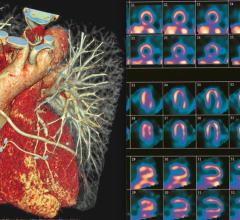
October 31, 2016 — White coat hypertension, where patients have high blood pressure readings in a medical setting but normal blood pressure outside the doctor’s office, is most likely an innocuous condition that is not a predictor of heart disease or stroke — except in a small group of older patients. This conclusion was drawn from a study published recently in the Journal of the American College of Cardiology.
White coat hypertension, identified more than 30 years ago, is a common condition that is thought to be the result of patients feeling stressed in a medical setting or in the presence of clinicians in “white coats,” though some research has suggested it is associated with health risks. Recent studies have shown white coat hypertension occurs more frequently in older patients and the difference between the blood pressure readings in the two settings becomes larger with age.
To find out if white coat hypertension is an indicator of increased risk for heart disease, a researcher from the University of California, Irvine, in collaboration with the International Database on Ambulatory blood pressure in relation to Cardiovascular Outcomes (IDACO), looked at 653 patients identified with white coat hypertension from the international hypertension database. This group was compared to 653 patients of similar age and similar risk for developing heart disease.
The researchers, led by Stanley S. Franklin, M.D., found that during a follow-up period of about 10.6 years, there was no difference in the number of new heart-related health events between younger subjects (below age 60) with normal blood pressure and those of a similar age and risk profile with white coat hypertension.
A difference was seen in older patients. Out of 92 high-risk subjects age 60 and older, there were 18 more new cardiovascular events in the follow-up period for those diagnosed with white coat hypertension than the same number of subjects of similar age and otherwise similar risk profile with normal blood pressure.
Researchers said the results support the hypothesis that a small number of patients considered to have white coat hypertension actually have isolated systolic hypertension, a common condition where the top number in the blood pressure reading (systolic blood pressure) is too high, but the bottom number (the diastolic blood pressure) is normal. Isolated systolic hypertension can be an indicator of risk for future heart disease or stroke.
The authors conclude multiple blood pressure readings, including readings outside a clinical setting, are necessary to accurately identify cardiovascular risk, especially in older high-risk patients.
In an accompanying editorial, Giuseppe Mancia, M.D., and Guido Grassi, M.D., of the University of Milano Bicocca, Milan, Italy, said that the study group may not have been large enough or studied over a long enough time period to identify risk in the younger patients, so conclusions about younger patients may not be accurate, and more research is needed to fully understand the complexities of white coat hypertension.
The authors of the paper and the editorial reported no financial or other relationships relevant to the contents of the paper. The study was funded by grants from the European Union and agencies in countries were data was collected by IDACO researchers.
For more information: https://content.onlinejacc.org/journal.aspx


 January 23, 2024
January 23, 2024 








